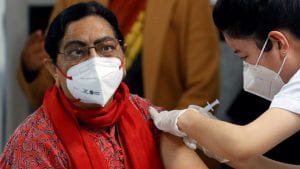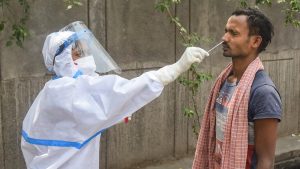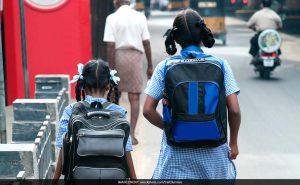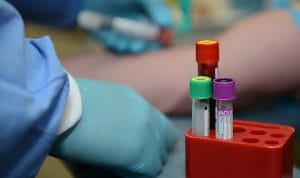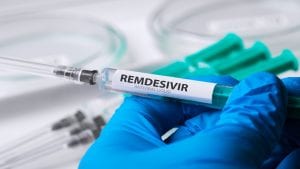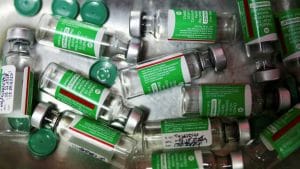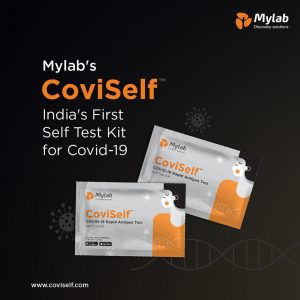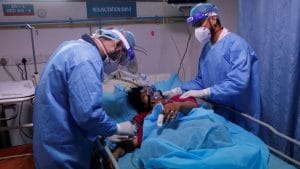Explained: How sero survey works and what are its latest findings

KV Prasad Jun 13, 2022, 06:35 AM IST (Published)
 Listen to the Article (6 Minutes)
Listen to the Article (6 Minutes)
Summary
This was the first national survey where children in age group of 6-17 were included.
The Indian Council of Medical Research (ICMR) conducted the fourth nationwide serological survey among adults and children in June (last 10 days) and July (first week) 2021. This was the first national survey where children (6-17) were included.
Nearly one-third of Indians (32.4 percent) did not have antibodies, which indicates that around 40 crore people can still get infected by the SARS-COV-2 virus.
The survey’s sample size was 28,975, including 8,691 children (6-17 years) and 7,252 healthcare workers across 70 districts and 21 states of India.
The first nationwide sero survey was conducted in May 2020, second in August 2020, third in December 2020 and January 2021.
ICMR Director General Dr Balram Bhargava said 10 villages or wards from each district; 40 individuals per village or ward, 400 individuals aged six or above per district; and 100 HCWs per district from district and sub-district hospitals were surveyed.
Goals
A sero survey is undertaken to provide data on the proportion of infected and asymptomatic people (existing and newer groups such as children in this latest survey) especially during a global pandemic such as COVID-19.
The sero survey has multiple uses and can ascertain the likely impact and spread of the infection based on its findings. It can pinpoint high-risk categories, herd immunity or infection and other behaviour in specific groups such as the vulnerable and the asymptomatic.
The sero survey can help develop customised care, cure and precautions for all such groups. It can also determine the duration of immunity of those who took vaccines or did not; and even those who recovered from the virus or got infected again.
Modus operandi
The sero survey tracks antibodies (called IgG antibodies) which start appearing 14 days into the infection.
Serological test collects blood samples to check antibodies while the RT-PCR and rapid antigen test (RAT) use nasal or oral swabs to check for the virus.
Findings – Adults
ICMR’s survey showed that 70 percent of the population over the age of six can be expected to have developed some sort of immunity against the disease.
About 32.4 percent did not have antibodies and the remaining 67.6 percent had antibodies.
COVID exposure (indicated by presence of antibodies) was higher in urban areas (69.6 percent) than in rural areas (66.7 percent).
The seroprevalence in healthcare workers, people who took one vaccine dose, and those who took both the doses was 85.2 percent, 81 percent and 89.8 percent, respectively. The seroprevalence was higher (69.2 percent) in women than in men (65.8 percent).
The age group of 45-60 had the highest seropositivity of 77.6 percent.
Of those surveyed, 62.2 percent were not vaccinated (including 10.5 percent of healthcare workers), while 13 percent were fully vaccinated and 24.8 percent had taken one dose.
Findings – Under 18
Young people handled COVID-19 better than adults but the antibody exposure in children is very similar to that in adults, as per the ICMR survey. Youngsters had lower ace receptors (to which virus attaches itself).
Though youngsters showed the lowest exposure to the coronavirus, more than 50 percent of the children in 6-17 years age group had antibodies. The seropositivity rate in 6-9 years was 57.2 percent; and 61.6 percent in the 10-17 years age group showed antibodies.
Dr Bhargava also said primary schools can be opened first and secondary schools later.
The fourth survey showed more people being exposed to COVID-19 vis-a-vis 25 percent in the third sero survey; 7.1 percent in the second and 0.7 percent in the first survey conducted by ICMR.
But Dr Bhargava advised that all social gatherings and non-essential travel (even after full vaccination) should be avoided.

Elon Musk forms several ‘X Holdings’ companies to fund potential Twitter buyout
3 Mins Read
Thursday’s filing dispelled some doubts, though Musk still has work to do. He and his advisers will spend the coming days vetting potential investors for the equity portion of his offer, according to people familiar with the matter

KV Prasad Journo follow politics, process in Parliament and US Congress. Former Congressional APSA-Fulbright Fellow










 Listen to the Article
Listen to the Article  Daily Newsletter
Daily Newsletter





